Journal list menu
Export Citations
Download PDFs
COVER IMAGE
Cover Image, Volume 26, Issue 8
- Page: i
- First Published: 23 July 2018
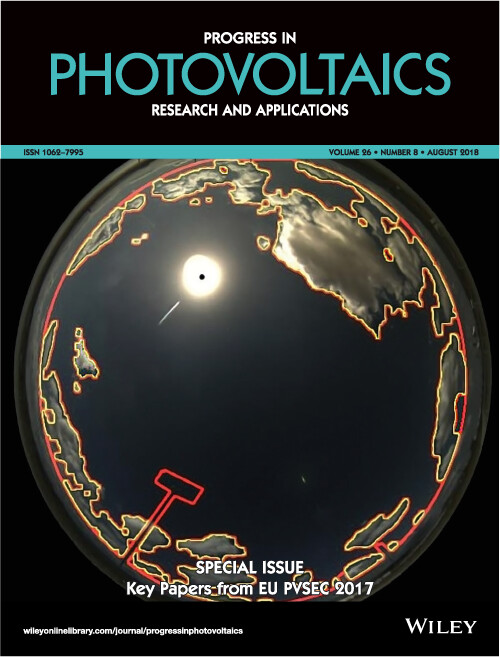
The cover image, by Pascal Kuhn et al., is based on the Special Issue Paper Validation of an all-sky imager–based nowcasting system for industrial PV plants, https://doi.org/10.1002/pip.2968.
ISSUE INFORMATION
EU PVSEC PAPERS
Solar photovoltaics demand for the global energy transition in the power sector
- Pages: 505-523
- First Published: 02 November 2017
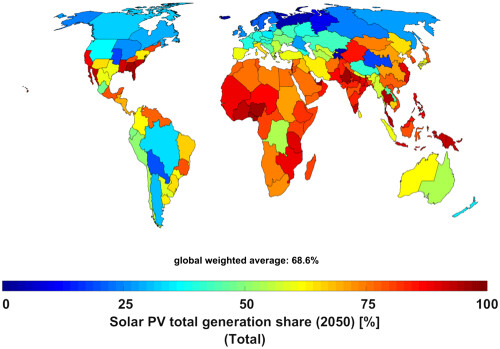
This research presents for the first time the energy transition in the power sector towards 100% renewable energy modelled in hourly resolution for an entire year and in 5-year time steps till 2050 for the world structured in 145 regions. The averaged global photovoltaic (PV) electricity supply share is derived to about 69% in the year 2050, which is the highest ever reported value. The high PV supply share is driven by the fast cost decline of PV and supporting battery technologies, but also by the comparably low cost decline of concentrating solar thermal power and wind energy.
Influence of the precursor layer composition and deposition processes on the electronic quality of liquid phase crystallized silicon absorbers
- Pages: 524-532
- First Published: 16 November 2017
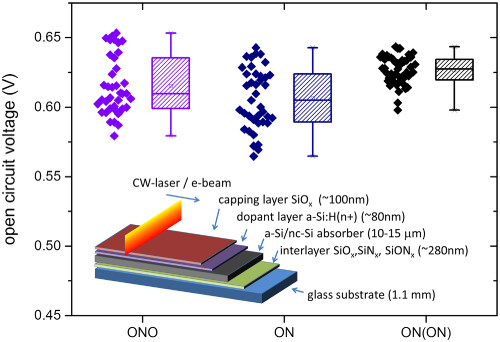
In this work, we summarize the influence of different interlayer materials on the electronic and morphological properties of liquid phase crystallized absorbers. We compare interdigitated back-contact solar cells made on these stacks and discuss approaches to further increase the overall cell performance by tackling bulk limitations.
Understanding the light-induced degradation at elevated temperatures: Similarities between multicrystalline and floatzone p-type silicon
- Pages: 533-542
- First Published: 27 November 2017
Analysis for efficiency potential of high-efficiency and next-generation solar cells
- Pages: 543-552
- First Published: 08 November 2017
The Product Environmental Footprint (PEF) of photovoltaic modules—Lessons learned from the environmental footprint pilot phase on the way to a single market for green products in the European Union
- Pages: 553-564
- First Published: 12 December 2017
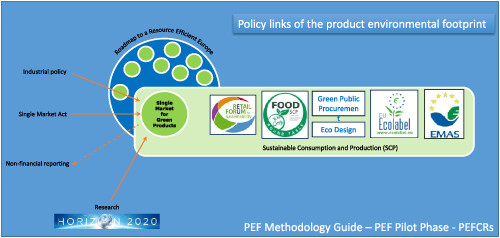
Through the formation of a broad coalition of industrial, scientific, and societal stakeholders, the Product Environmental Footprint Guide of the European Commission was applied to photovoltaic electricity generation by developing, testing, and evaluating Product Environmental Footprint Category Rules. This political mandate, as well as the provision of an inclusive, transparent, and interactive testing environment during the environmental footprint pilot phase from 2013 to 2016 enabled the establishment of a common basis for measuring and communicating the environmental performance of photovoltaic electricity generation, which can be recognized by all market actors as well as regulators across Europe.
Angular-dependent spectral responsivity—Traceable measurements on optical losses in PV devices
- Pages: 565-578
- First Published: 27 November 2017
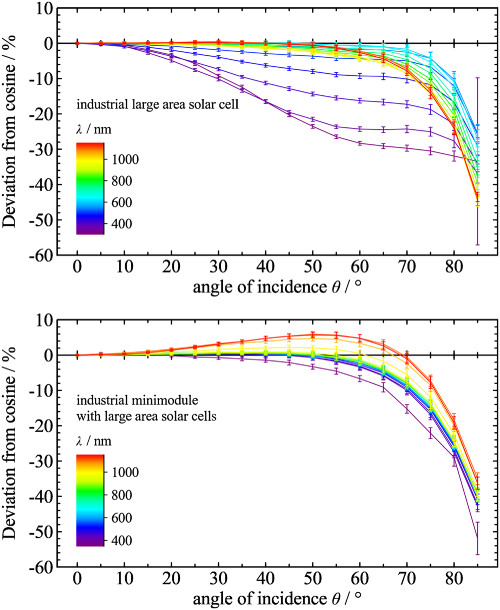
“eye-catching“-Figure: Effect of encapsulation on a typical c-Si solar cell: Deviation from ideal cosine response of an industrial large area c-Si solar cell and a mini-module made from the same type of solar cell. The angular-dependent responsivity significantly improves due to the encapsulation, leading even to a relative overperformance in the infrared region.
Tunnel oxide passivating electron contacts as full-area rear emitter of high-efficiency p-type silicon solar cells
- Pages: 579-586
- First Published: 10 November 2017
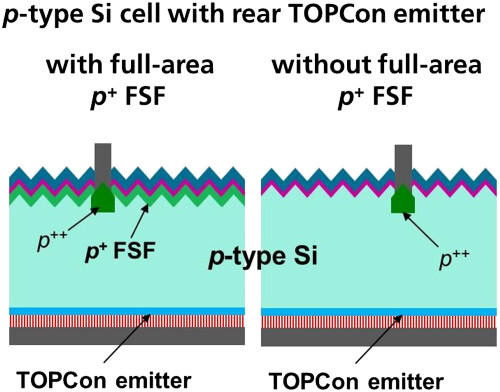
Tunnel oxide passivating contacts (TOPCon) consisting of an ultrathin tunnel oxide capped by a doped Si film exhibit excellent passivation and contact properties. In this work, we study the performance of the TOPCon layer as a full-area emitter at the rear side of p-type Si solar cells, with a special focus on the influence of the lateral conductivity within the p+ front surface field (FSF). Efficiencies up to 24.3% have been achieved with a FSF and up to 23.9% without, demonstrating a high device performance even without a lateral conductivity in the FSF.
Reconstructing photoluminescence spectra at liquid nitrogen temperature from heavily boron-doped regions of crystalline silicon solar cells
- Pages: 587-596
- First Published: 10 November 2017
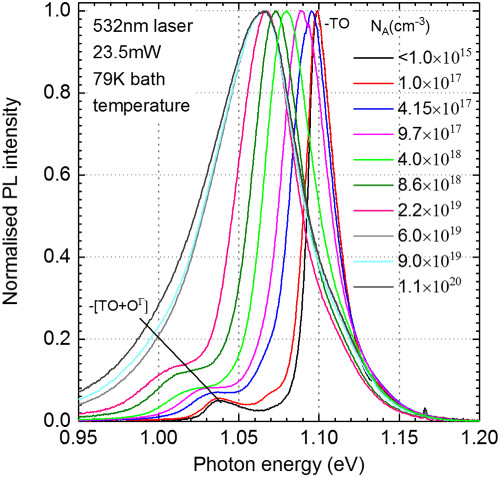
In this work, we built a 3-curve model that simulates the shape of the spectrally resolved PhotoLuminescence spectra for different concentrations of boron doping in crystalline silicon at 79 K. This work also shows that the PL spectra from a thermally boron-diffused wafer can be reconstructed based on superposition of PL spectra arising from the layers of different doping beneath the surface, making spectrally resolved PL technique an easy and damage free method to probe the boron dopant profile in the thermally diffused wafers.
Managing technical risks in PV investments: How to quantify the impact of risk mitigation measures for different PV project phases?
- Pages: 597-607
- First Published: 12 December 2017
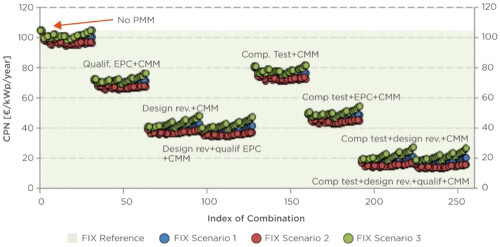
The cost priority number (CPN) analysis shows that for 99% of all mitigation measure combinations, the scenarios will result in economic benefit by reducing the CPN to values lower than the reference (104.75 €/kWp/year). Preventive mitigation measures have the highest impact on CPN compared to corrective mitigation measures, for instance, qualification of Engineering Procurement and Construction (EPC), and design review will reduce the CPN to 40 €/kWp/year. Savings up to 90 €/kWp/year appear possible for the best combinations of selected mitigation measures.
Validation of an all-sky imager–based nowcasting system for industrial PV plants
- Pages: 608-621
- First Published: 20 November 2017
Verifying defective PV-modules by IR-imaging and controlling with module optimizers
- Pages: 622-630
- First Published: 11 January 2018
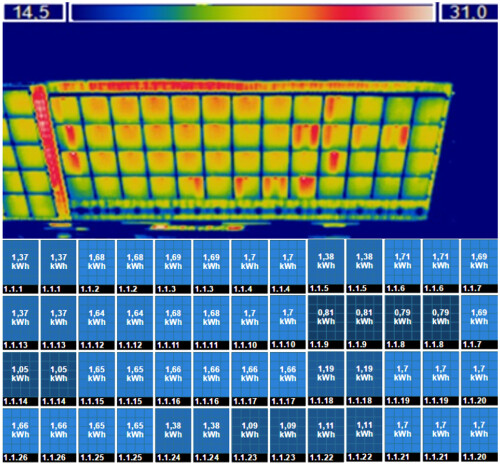
Quality control and efficient operation of PV-systems can be achieved for example by occasional IR-imaging or tracking with module optimizers. Module failures affect the electrical properties, which influence the module power and yield as well as the temperature distribution during operation. Mapping of the irregular temperature distribution and the module power or yield allow the identification of module failures and the impact on the power output.
The social profitability of photovoltaics in Germany
- Pages: 631-641
- First Published: 02 February 2018
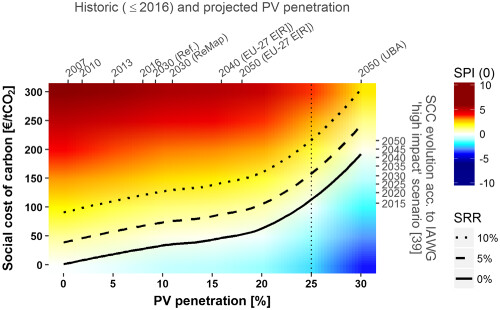
We calculate the social profitability of photovoltaics (PV) in Germany by including not only private costs and benefits but also integration costs to the electricity system as PV penetration increases and avoided environmental externalities, using the internal rate of return and the profitability index as indicators. Our results show that when these factors are considered, the social profitability of PV in Germany is higher than 10% at the lower bound of the social cost of carbon (150€/tCO2) up to a penetration level of at least 15% and positive up to a penetration level of at least 25%.
Identifying risks, costs, and lessons from ARENA-funded off-grid renewable energy projects in regional Australia
- Pages: 642-650
- First Published: 10 April 2018
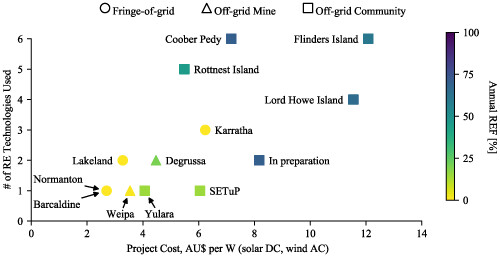
ARENA has provided grant funding to 18 off-grid and fringe-of-grid renewable energy projects under its RAR program since 2013. These projects show that land acquisition, technical integration, stakeholder engagement, and access to finance are among the main reasons for project delivery delays, and a remoteness premium is shown by comparing these projects with utility-scale on-grid projects. ARENA's Knowledge Sharing model allows the funding agency to be recompensed by data and information from funded projects, and increases its impact.
Wafer integrated micro-scale concentrating photovoltaics
- Pages: 651-658
- First Published: 23 July 2018
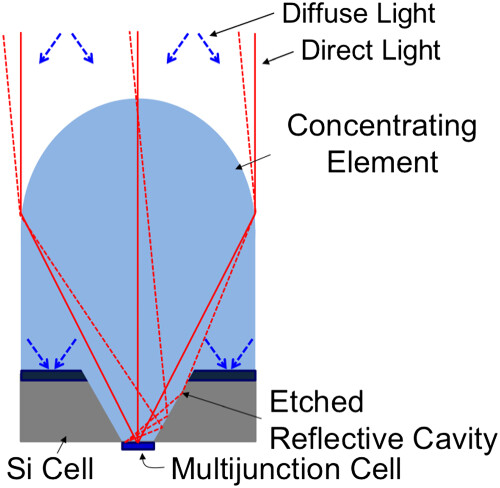
A novel micro-scale photovoltaic concept is proposed and developed, which seamlessly integrates multijunction micro-cells with a multi-functional silicon platform that simultaneously provides optical concentration, hybrid PV/CPV architecture, and mechanical alignment features. Over 100% improvement on the concentration-acceptance-angle product (CAP) is demonstrated using the wafer-embedded micro-concentrating elements. Leveraging low-cost micro-fabrication and high-level integration techniques, such an approach presents a promising route to combine the high performance of multijunction solar cells and the low costs of flat-plate Si PV systems.
Scaling limits to large area perovskite solar cell efficiency
- Pages: 659-674
- First Published: 23 July 2018
Machine learning PV system performance analyser
- Pages: 675-687
- First Published: 23 July 2018
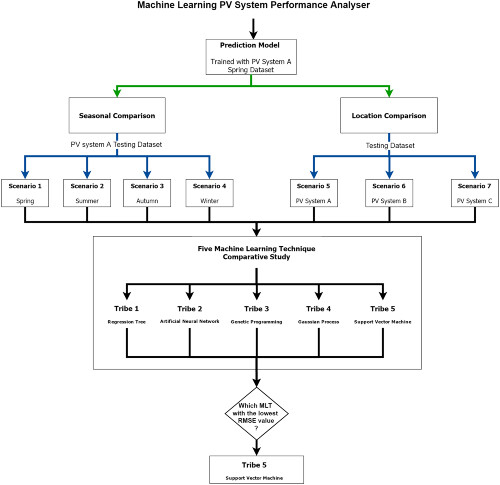
The machine learning photovoltaic system performance analyser prevents investment monetary losses by using only 3 months of historical data for training the prediction models. Five machine learning techniques were studied, and results show that the regression tree provides acceptable results in all locations and all seasons of the year, while the support vector machine for regression is best for spring and summer training dataset months, and the Gaussian process is best for the autumn and winter training dataset months.
LITERATURE SURVEY
Photovoltaics literature survey (No. 144)
- Pages: 688-693
- First Published: 23 July 2018







